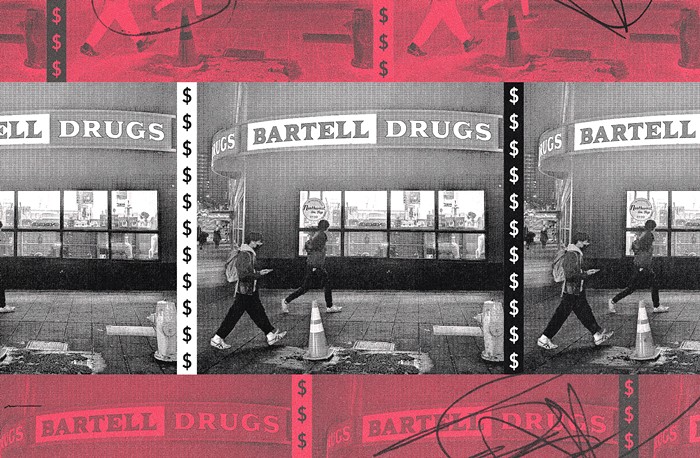
The exhibit opens this weekend, and standing amongst the objects on display is an absolutely spellbinding experience. But if I’m being completely honest, I didn’t initially get why the exhibit exists.
Of course I like MoPOP — a repository of pop-cultural knowledge and fandom? Yes, obviously, every city should have one of those. And of course I’m enthusiastic about queer history, a field that is so much my personal brand that MoPOP asked me to moderate a panel discussion about the items on display. (That discussion will be available to watch this weekend.)
But I can’t say that I ever felt a strong need to gaze upon Martina Navratilova's tennis racket.
That ignores the cumulative effect of seeing all of these items together, though. There’s something magic about strolling from one of Harvey Milk’s election signs to the wedding rings that belonged to the couple whose lawsuit ended the ban on marriage equality. Standing in the middle of the exhibit, you can see the famous “Yep I’m Gay” cover of Time, and also the 1954 issue of ONE, a magazine that the Post Office initially refused to deliver and that ultimately established a First Amendment right to distribute queer material in the mail.
I visited the exhibit for a little preview this week, and as I strolled through, I felt like I could see little red strings connecting each of the items. Hey, there’s the typewriter that Frank Kameny used to organize protests after he was fired from his government job for being gay — you can connect that to the gavel displayed on the other side of the room that Nancy Pelosi used to usher in the repeal of the ban on queer people in the military.
Delightfully, there’s also a Seattle section around the end, with costumes donated by Aleska Manila and Dina Martina, photos of the band Thunderpussy, and so on. (Sidenote: Someone really needs to conserve that “Casino Dancing” sign in Pioneer Square before it disappears.)
Overall, the effect of the exhibit is like gazing into a mirror that stretches back through previous lives. If anything, I wish it could have gone even farther; a few years ago, I visited an incredible exhibit at the Tate that journeyed back to the 1800s. American queerness is certainly that old, and discussions of our vast LGBTQ+ past almost always omit Indigenous people.
But for a relatively small traveling exhibit (Rise Up was initially designed by the Newseum), this is a lovely foundation for further thought about how we got where we are today. Bit by bit, object by object, each of the artifacts on display has attacked the laws and censors that stood on every American’s neck for the last century, and no matter how queer your life is today, Rise Up is a showcase of items that in some way contributed to how comfortably queer the country has become.















